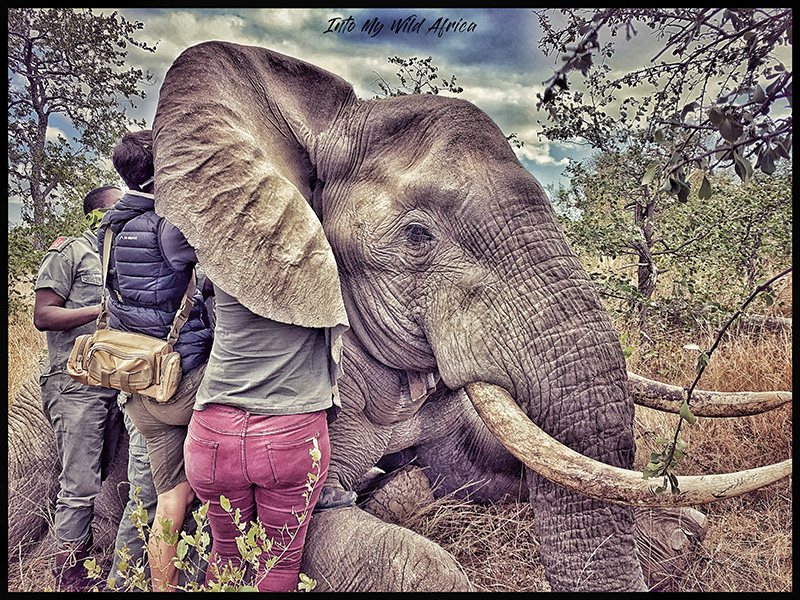
FACE TO FACE WITH A WILD ELEPHANT
IN THE AFRICAN BUSH
FOR A VERY SPECIAL MISSION
A brown ranger hat, on the head, a feather in one of the ear, lips covered by a mat pink fuchsia colour, and passionate by all that can be linked with the African bush and the wildlife – you just got to know me now!
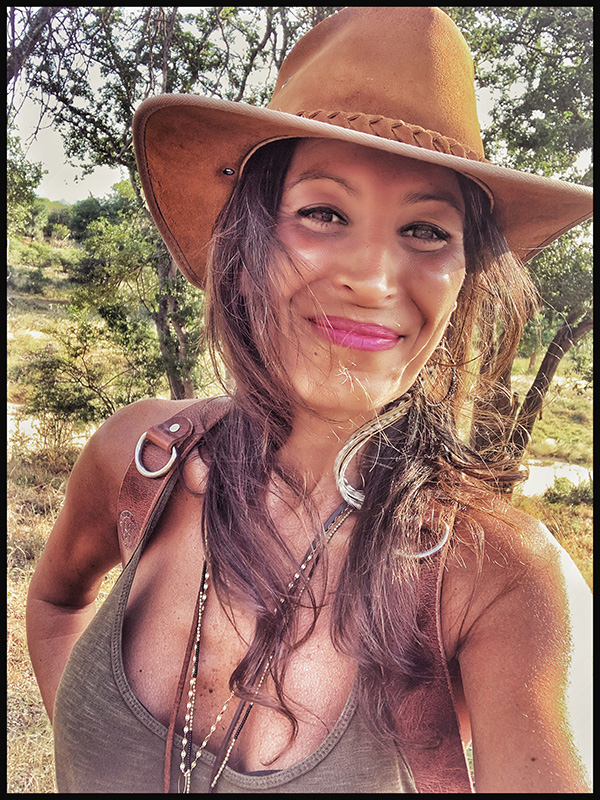
Among all those majestic wild animals I am lucky to spend time with and observe from the bush here in South Africa, there is one who is and will always be my favourite: the African elephant.
I can still remember myself in the old days, when I was a kid, looking at all those wildlife documentaries and running out, after school, to meet my favourite animals in a Park in France called Parc Tête d’Or.
Two elephants, some giraffes and other animals were living there in captivity.
I used to run there to meet my two favourite elephants, to give them some bread that I had stolen from the kitchen, then I would spend some time watching the giraffes and feed some squirrels with the delicious cashew nuts that I had also stolen from what was supposed to be the sundowner aperitif of my aunt and uncle (who always wondered where those damn cashew nuts were going!).
Africa has always been in my blood: I was born in Algeria in the north of Africa, where I spent most of my childhood with my mum (so many good memories there), and then grew up in France where I studied and worked before completely falling in love with South Africa 11 years ago. In a way, Africa had never really left me.
A unique opportunity
So when Elephants Alive, an NGO based in South Africa where I am now, offered me the opportunity to join them and help them by filming a field operation to remove a GPS collar from a wild elephant, well I of course I said YESSSS!!
In 2019, after having quit my job in France, I created INTO MY WILD AFRICA to share my passion about nature and wildlife by offering private tailor-made safaris. If you want to know more about the whole story of that life changing experience, you can have a look at my first article in my blog my new life as a safari private guide where I explain all of this in details.
So with my new job, being surrounded by wild elephants is something I am lucky to experience quite often while on safari or when I drive around the Greater Kruger National Park (the largest protected area in South Africa).
And you cannot imagine how many stories I have got about elephants encounters, especially when I was doing my field guide training in the middle of the bush in Botswana. Here I slept in a basic tent and was surrounded by elephants like people in Paris are by pigeons! But this is another story I will probably tell you about in another article.
But compared to that, tracking a specific wild elephant in the middle of the bush and being a part of his capture on the back of a helicopter which was operated by the best skillful pilot I have ever met was absolutely incredible! Observing the wildlife vet darting a massive bull of several tonnes and then running to him to remove his GPS collar in a very short space of time in order to not disturb the animal for too long was definitely another story, believe me!
Why put a gps collar on an elephant?
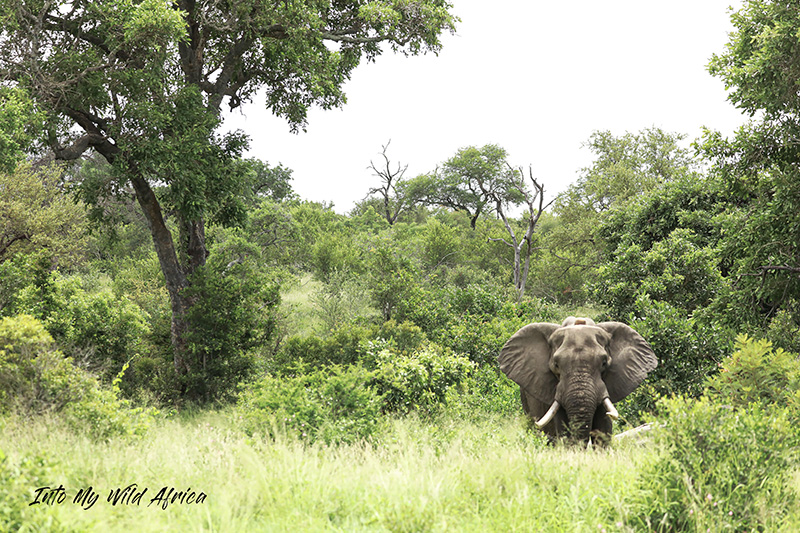
You might be asking yourself why was that elephant, Fortunate, wearing a GPS collar?
It is indeed a very good question and I do think that it is crucial to understand why using GPS collars on wild elephants in their natural habitat is so useful for their protection and for understanding their behaviour.
Let me ask you a question:
According to you, what is the best way to protect a wild animal, especially when its natural habitat is being slowly reduced by human activities or infrastructures, sometimes increasing conflict with other species through competition for resources and space?
The answer is very simple and logic: to be able to protect wildlife, you need first to understand and anticipate their movements and their habits, and for that you need to study those animals and analyse all their movement patterns in the area.
What does this mean for the elephants?
We need to ask ourselves those kinds of questions and more importantly, be able to answer these:
- What are their movement patterns?
- What are their habits and their levels of stress?
- What can influence their behaviour and their choice of activities?
- How can human presence and infrastructures, influence their movements?
- How can poaching or hunting activities influence their movements?
- Why do some elephants have a smaller home ranges than others?
The answers to all of those questions allows Elephants Alive to deliver the right tools and scientific facts for the conservation and management purposes within the private nature reserves where the elephants live.
GPS collars are a very useful tool to collect live movement data and help answer parts of those questions. The data about elephant’s movements are very precious and are contributing to one of the key missions of Elephants Alive which is insuring the survival of elephants and their habitats and promoting harmonious co-existence between elephants and people.
Who is elephants alive? What is their mission?
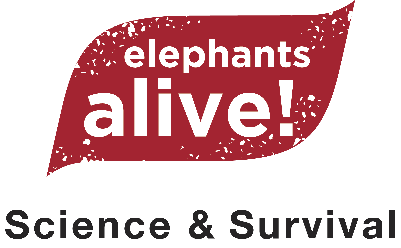
Elephants Alive is an NGO officially created in 2003 by both co-founder Dr Michelle Henley and Marlene McCay as a branch of the Save the Elephants operating in the Associated Private Nature Reserves adjacent to the Kruger National Park.
Elephant research and conservation is obviously at the centre of their work.
Their quest involves delivering research solutions which acknowledge elephants as an integral part of the ecosystem in which they occupy. They work towards achieving a greater understanding of the complex relationships that elephants have with each other and their surroundings, including the people with whom they share their environment.
Elephants alive team
From left to the right:
-
Dr Michelle Henley Co-founder, Director and principal researcher of Elephants Alive
-
Anka Bedetti, Tracking and ID Study Projects Manager
-
Robin Cook, Big Tree Projects Manager
-
Ronny Makukule, Researcher & Bee Project-, Elephant Mortalities- and Education Liason officer
-
Joel Sithole, Researcher & Elephant Mortalities and Education Liason Officer
-
Tinyiko Ophenia Masia Bosh, Office manager
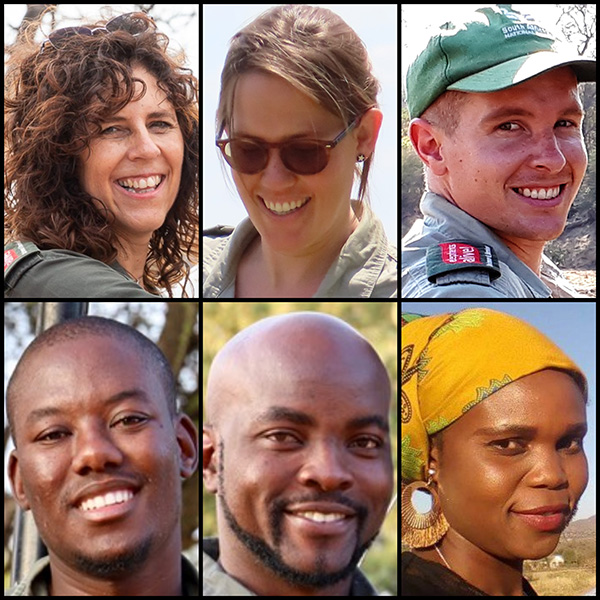
Fortunate: one of a number of elephants wearing a collar
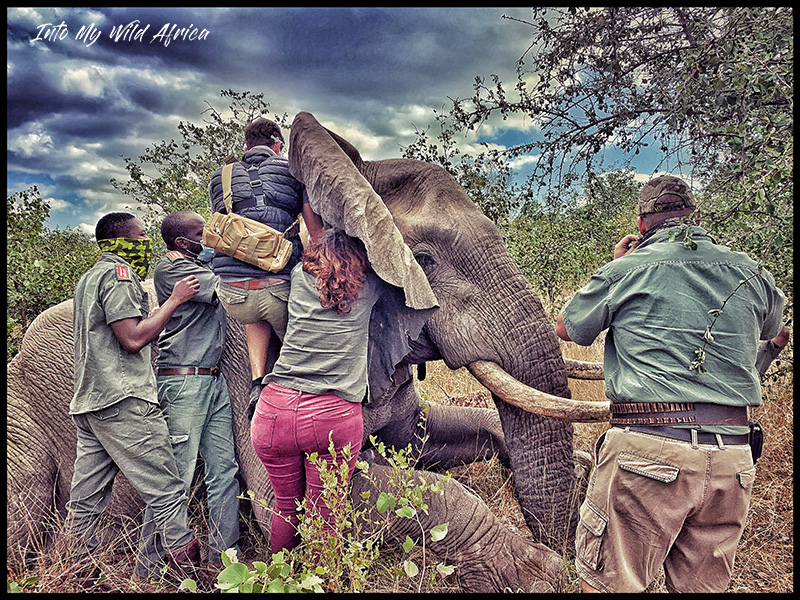

Each elephant who has been collared will get a name in order to identify them and follow their movements in the African bush. Each collared elephant is added to an ID guide book, where all of their physical characteristics are noted.
Fortunate is one of a number of elephants who has been collared by Elephants Alive in South Africa. He is beautiful male of a round 25-30 years, and has been collared since July 2015. Since then, his collar provided precious data regarding his movements and habits around a mining area close to the town of Phalaborwa and not too far from the Kruger National Park and the Associated Private Nature Reserves.
The data are showing, for instance, that Fortunate is spending most of his time around this mining area, with a smaller home range than the other elephants despite there being no fence stopping him from going into the Kruger National Park like other elephants are doing.
Each GPS collar has a limited battery life and so when the collar is not recording movement locations anymore, it’s then time to remove it. Fortunate’s collar has active for around 4 years, and so it was time to remove it and hence this operation was planned.
I was very lucky to be involved with the whole operation in the field, filming all of the steps, so how about I share with all of you the details of this amazing experience, and at the end the whole story in video?
A delicate operation: finding Fortunate
to remove his collar
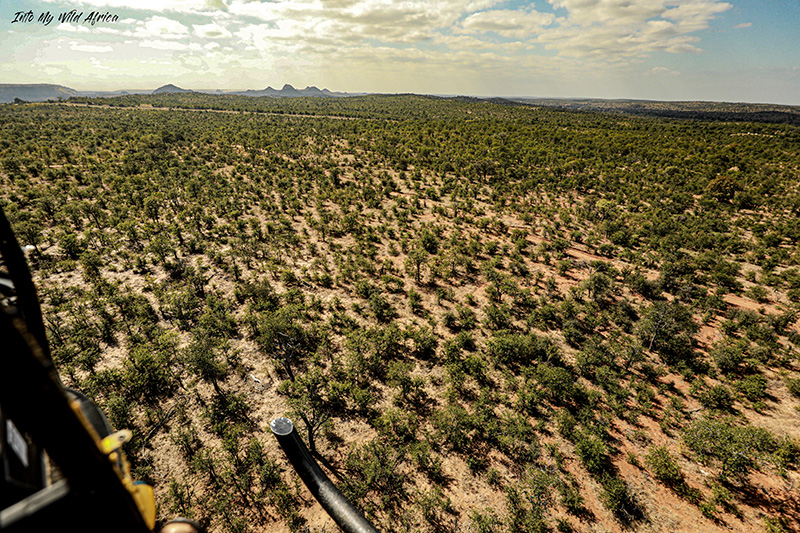
TRACKING FORTUNATE
5 o’clock in the morning, my alarm is ringing. It’s still dark outside and I can feel the cool air around me while getting out of the bed.
The excitement of joining part of the Elephants Alive team to track and find Fortunate is giving me the necessary energy and boost to get ready very quickly and drive towards the Reserve where Fortunate have been seen for the last time the day just before.
As we are in the middle of the Covid-19, the team involved in this operation is smaller than usual and of course, everyone is wearing a mask.
So here we are, in the African bush, close to the mining area of Phalaborwa, looking for Fortunate the elephant.
You might think that spotting a massive animal like the elephant in the bush, is a very easy task, but believe me, when the bush is thick and there’s lots of different herds of elephants moving around, it is not that easy.
We first tried to look for him by car, driving and looking for the fresh tracks on the ground, going up on the hills to spot any movements. We came across a lot of elephants but still not the one that we were looking for. We tried to capture any signal that the collar could perhaps still send but it was too low to really help us.
Finally we got lucky and a member of the team spotted an elephant in the distance, hanging around with two younger bulls. From there, it was impossible to be sure that this elephant was indeed Fortunate. We decided then to keep on tracking by walking with the help of an armed ranger, as we were in the middle of a big five reserve where lions, leopards, and other potential predators are living.
I can assure you that walking in the bush under the heat and wearing a mask is not that easy.
But finally we got closer to him and were able to clearly identify him. We made sure that we were in the right position regarding the wind blowing, as by doing this, the elephant was not able to smell us.
THE VETERINARIAN INTERVENTION
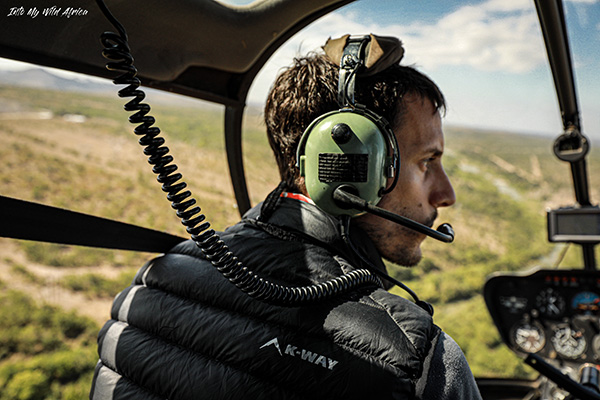
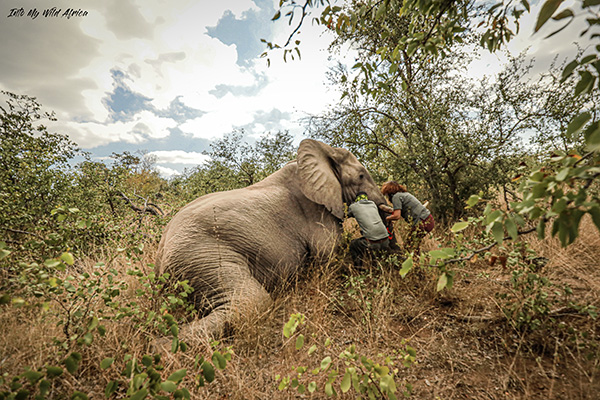
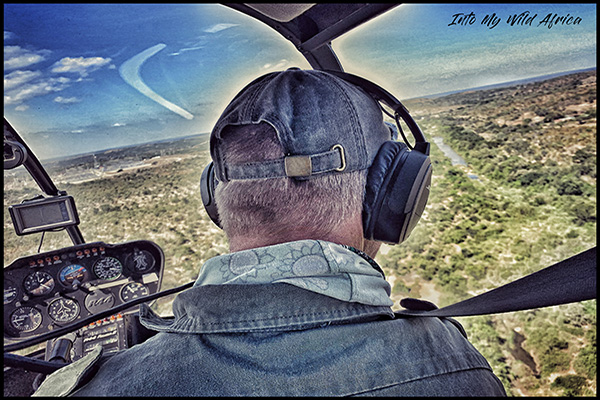
Now that we had found Fortunate, Joel Sithole (Elephants Alive) sent a message to the wildlife veterinarian Dr. Joel Alves (Wildlifevets.net) who was waiting on the other side with the helicopter pilot Gerry McDonald (Wildlife Helicopter Solutions) to fly towards us. It took them less than half an hour to arrive.
By that time, Fortunate had moved in the thick bush and we didn’t have any visual of him.
The helicopter was now here, so I joined the pilot and the veterinarian in the helicopter and we started to fly around to spot Fortunate so that the Joel could dart him from the air while the pilot made sure to orientate the bull in an open area to ensure an easy access for the team on the ground. The talent and the technical skills of the helicopter pilot Gerry McDonald made the whole difference to achieve that mission.
Once Fortunate had been darted, and the drug took a few minutes to be effective, allowing time for the helicopter to land close by and for the team on the ground to reach the darted elephant and remove his collar as fast as possible.
TEAM WORK
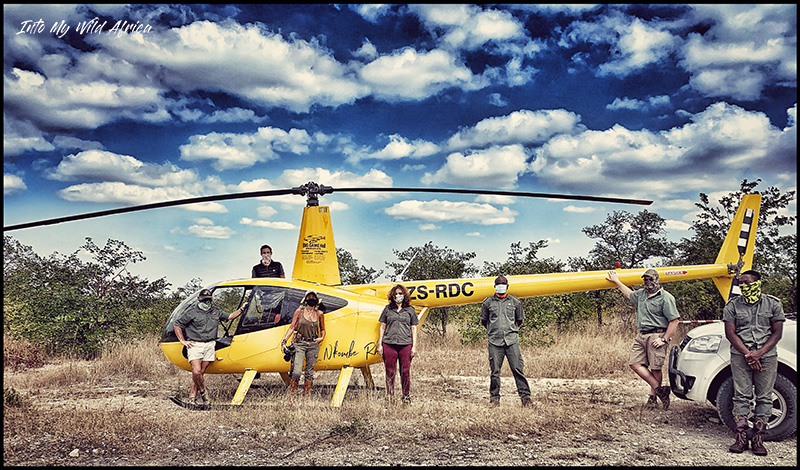
Each team member had a specific task. My task was filming the whole operation in order to produce a complete film about this whole operation happening during Covid-19.
During this kind of operation, you can never anticipate where and how the darted elephant will lay down. The ideal position is for the elephant to lay down on its side, which allows him to breathe more easily and is more comfortable too, giving the ground team time to collect blood samples, tails hair, dung and carry out body measurements.
This day Fortunate was lying upright, which is not an ideal position and as (because of Covid-19) the team was smaller, it was not possible to push such a large animal on his side.
Security and comfort of the animal is always the priority, so the reversal drug would be given as soon as the collar was removed, with no time for samples or measurements to be taken.
I have to say, I was quite impressed by the efficiency and the professionalism of the team, with everyone focused on the animal’s well-being.
In less than five minutes the whole operation was done, and the reversal drug was given to wake up Fortunate.
We all walked back to let Fortunate wake up, which he did in less than two minutes. I could see him slowly stand up and in a very gentle manner, walk away from us, disappearing again into the thick bush.
The objective was achieved and everyone was happy that the whole operation went so well.
Here is the film I produced showing the whole story of this incredible operation:
WHAT HAVE WE LEARNED FORM THE DATA OF THIS GPS COLLAR?
The data from these GPS collars is used to analyse the movements of the elephants who are wearing them. At the end of this article you will see the video showing the Google Earth map of Fortunate’s movements.
Regarding Fortunate, we can clearly see that his home range is smaller than the other elephants, spending most of his time (especially during the dry season when water and vegetation is limited) close to the mining area where he can find all the micro- and macronutrients he needs.
We can also notice that sometimes, especially during the wet season when resources are more freely available, Fortunate moves a bit far from the mining area towards the Kruger National Park.
It has been suspected that those movements towards Kruger National Park can perhaps be linked with Fortunate’s musth cycle, with him showing more interests in females further away.
The data collected from this GPS collar, as well as others, have been also been included in a larger scientific study conducted by Dr. Michelle Henley and 13 others Researchers (including Anka Bedetti from Elephants Alive), highlighting the influence of the spatial geochemistry on the home range of elephants.
The study was conducted on the Palabora Mining Company (PMC) land near Phalaborwa town, and adjacent areas within the Kruger National Park and the Associated Private Nature Reserves.
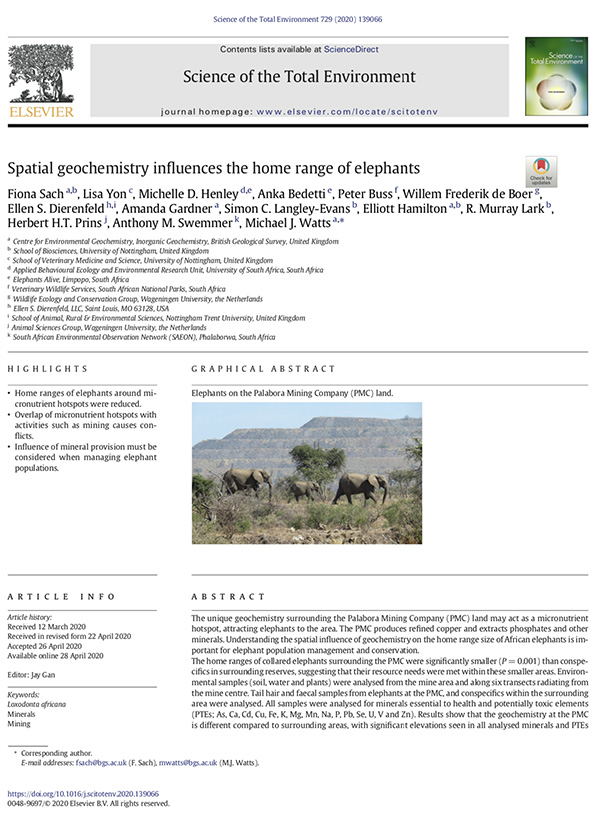
For that survey, soil, water and vegetation samples have been collected close to the mining area and compared to samples collected a bit further within the APNR area.
These samples show a very high concentration of minerals, especially on phosphorus and copper, close to the mining area, which perhaps attract the elephants.
As explained in the study, « minerals are required by elephants for a variety of biological processes including energy metabolism, organ and immune function, reproduction and cellular growth ».
For instance it is known that Phosphorus has an important role to play in the lactation for elephants.
Fortunate is of course not the only elephant to have been collared in this area. Six other elephants, having similar small home ranges close to the mining area, have also been collared and compared to the ones hanging in the KNP. Knowing that there is no fence between the mining area, the Kruger National Park and the Associated Private Nature Reserves, elephants are completely free to move in and out there. Even more interesting, samples have also been collected from elephant’s dung and from the hair of their tails.
THE RESULTS
The results of this study show that the mineral concentration is more important for elephants like Fortunate who spend more time around the mining area and whose home ranges are smaller (59%) than the other elephants.
It looks like Fortunate and the other six elephants have managed to find the minerals that they need in this area without having to move further away, which can explain why their movements show a smaller home range, staying most of the time close the mining area.
Once again, this kind of information highlight the incredible intelligence of those gentle giants who never stop learning and adapting to their habitat and environment.
It’s now up to us, to use in a good way, this information to prevent human-elephant conflict and to help in the conservation management and protection of this iconic species of Africa.
Elephants and their interaction within their habitat and among the herds is a fascinating topic which emphasizes again the level of emotional and intellectual intelligence of those majestic creatures.
Such a pleasure for me to keep on observing them wild in their natural habitat and trying to understand what make them act in this way or in another way.
I would like to thank Elephants Alive and Dr. Michelle Henley, for their trust and for having me being part of this incredible journey. It is such a privilege to spend time and learn with your team.
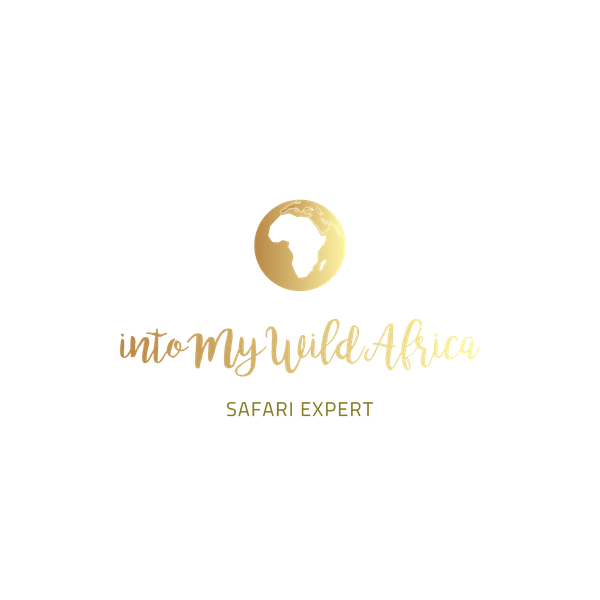
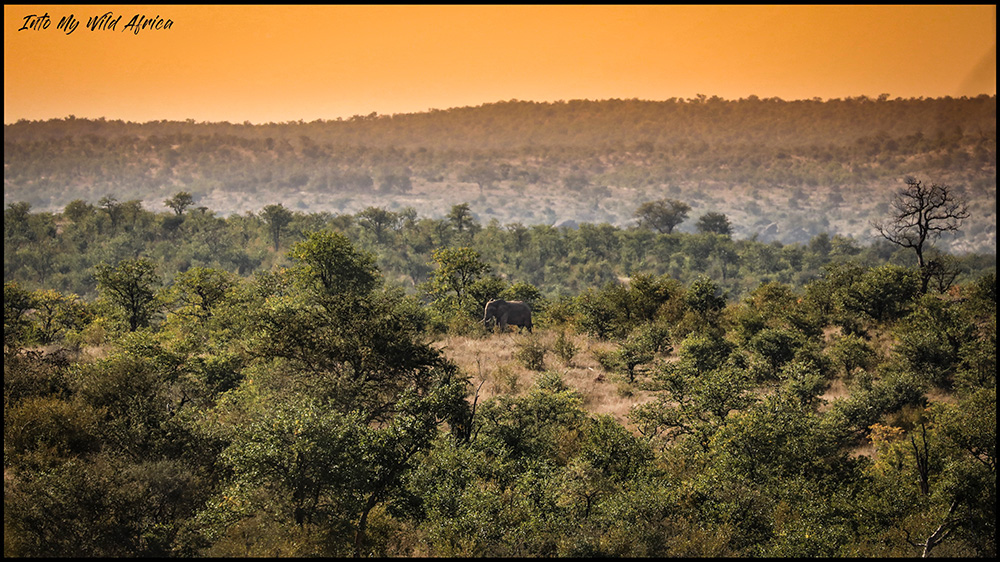
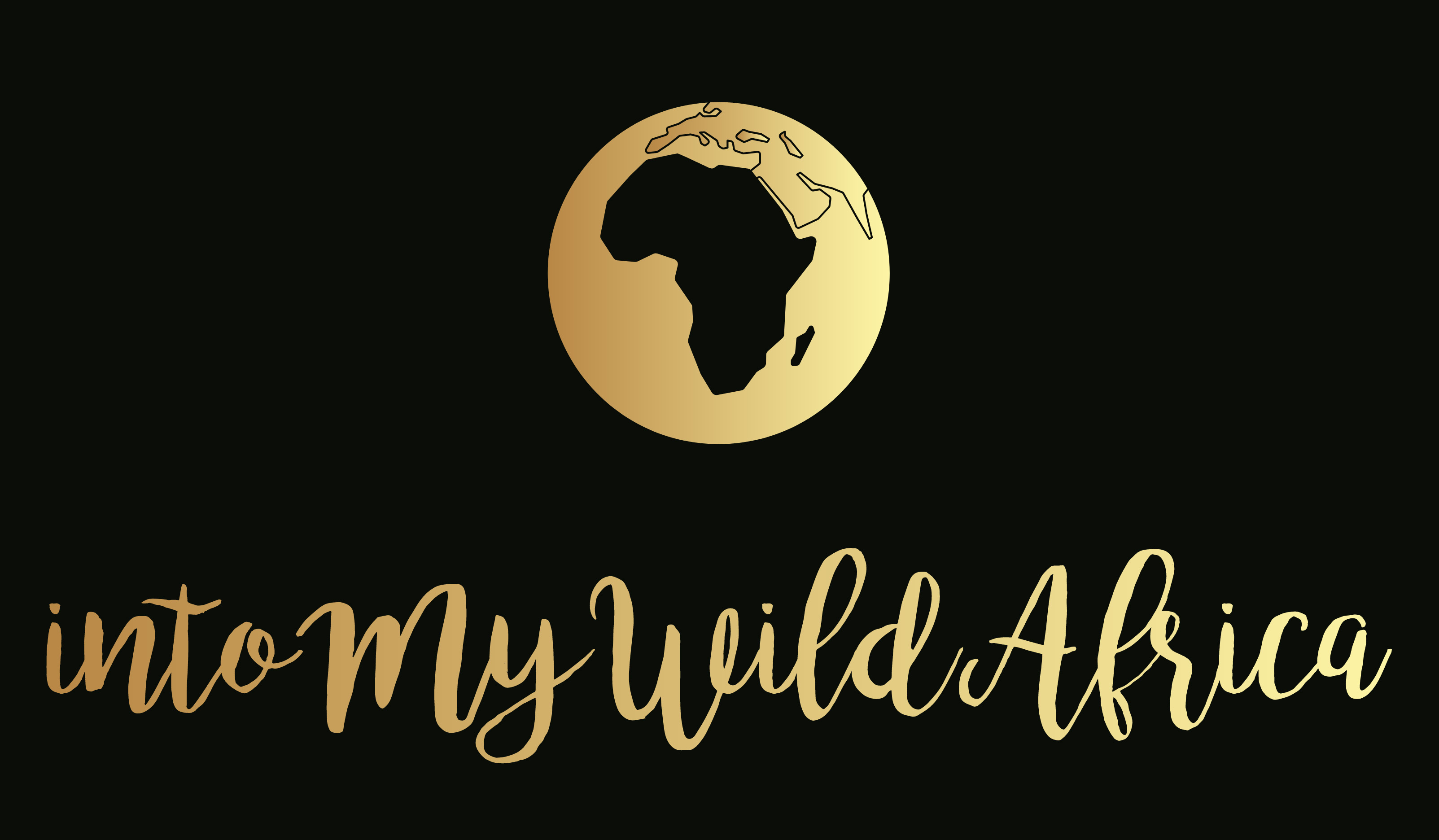
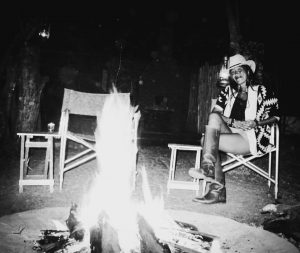
Amazing story and fantastic wild life. Wish to share a week or two with this wild life
Thanks for your comment, indeed the African wildlife is magic here, I am sure one day you will be able to join and appreciate the wilderness!